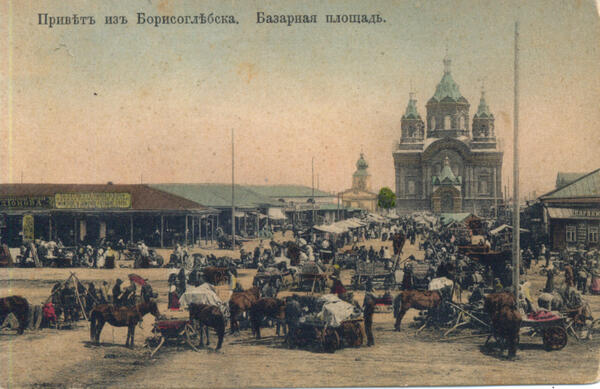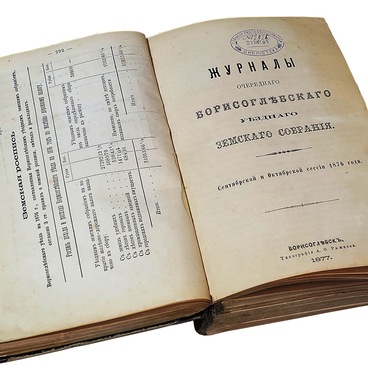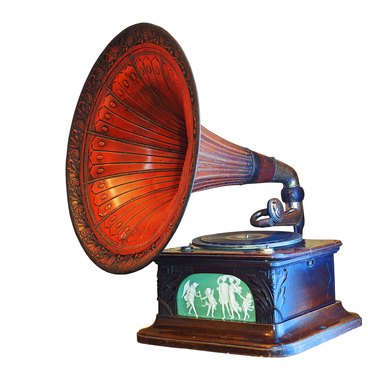The postcards with illustrations on the front side first appeared in Europe in the 19th century. The Russian Empire didn’t turn its back to the novelty and started to issue such postcards as well. Primarily they were called open letters and then the title was changed to postcards. In the late 19th century the view postcards featuring architectural objects (churches, public places and so on), landscapes, important works of famous Russian painters became popular.
The view postcards of the 19th and 20th centuries are the artifacts that give us opportunity to save many of already lost historical monuments in the memory.
In this exhibit item Market Square and Sretensky Cathedral in Borisoglebsk were captured. In the centre were the rows of shopping stalls with many shops and counters around the perimeter. The church depicted in the postcard was under construction from 1881 till 1901. It was built on the donation basis from the private parties and the public delegations. However, in 1929 the church was closed, and a few years later it was demolished.
The cross-domed church had four internal piers with risalits and gables. It was topped with five octagonal dome drums placed under the carcass tents. The central entrance was a church porch with a shed on the piles. It was also decorated with a tent and a top. There were two altars dedicated to Candlemas and Michael the Archangel.
Considering the fact that the church was demolished, there’s almost none primary sources left. However, according to some survived documents, Athos Icon of the Mother of God and the relics of revered saints such as Saint Andrew, Saint Pantaleon, and Saint Paraskevi were kept there. All mentioned relics were kept in the wooden shrine placed into the silver case. The inscription was engraved on it indicating the fact that the church was built in the memory of getting rid of cholera and was dedicated to God by the request of an archpriest and a local merchant.
The churchmen were two priests, a deacon, and psalm readers. A parochial school and a fund functioned at the church.
In 1929 the church was closed and a few years later it was demolished.



